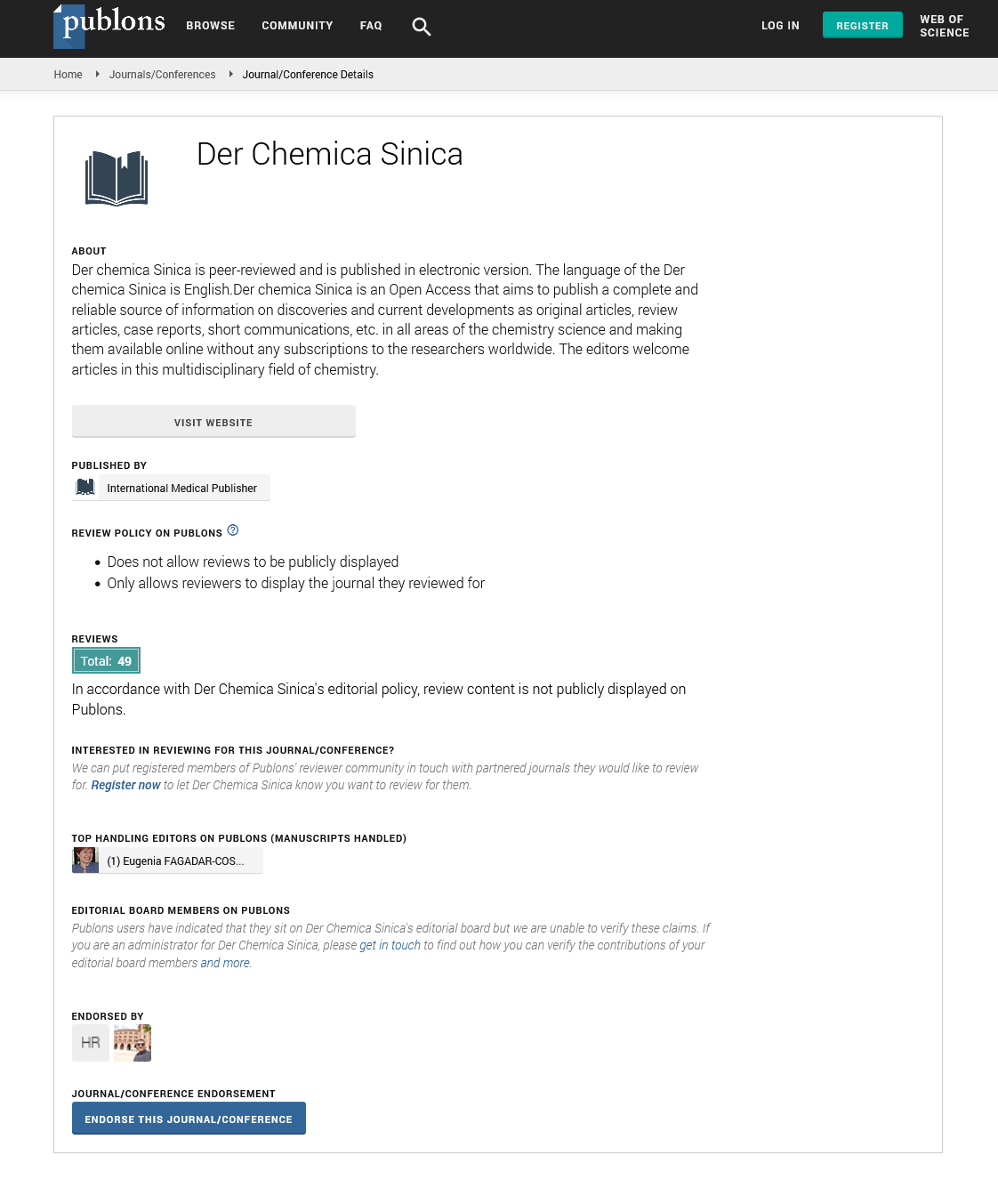ISSN : 0976-8505
Der Chemica Sinica
Abstract
Sono and Sonophotoctalysis for wastewater treatment
In the last two decades, advanced oxidation process (AOP) has been developed to remove low amount of organic compounds from aqueous wastewater. Free radicals involved in the AOP can be produced using several radiation methods, including UV, γ-radiation, electron-beam and ultrasonic waves. Ultrasonication promotes oxidative degradation of organic compounds by hydroxyl radicals. The chemical effect of ultrasound is produced through the phenomenon of cavitation, which is caused by the expansion and contraction of cavitation nuclei due to the compression and rarefaction cycles of ultrasonic waves. Cavitation causes the formation, rapid growth and finally implosive collapse of the bubbles, resulting in unusual reaction environment in the vicinity of the bubble. The temperature inside the cavity can theoretically reach temperatures of about 5,200 K in the collapsing bubbles and 1,900 K in the interfacial region between the solution and the collapsing bubbles. The main objective of this research is to compare the degradation of Eosin B and Rhodamine B by sonochemical degradation, and by the combination of ultrasound with other advanced oxidation process,like sonophotocatalysis and photocatalysis in presence of Na2S2O3, KI to inhibit electron-hole recombination and enhance the degradation. The degradation of the two dyes were analysis under the influence of ultrasound, photocatalysis and sonophotocatalysis under solar irradiation and sun simulator using n-titanium dioxide ae well as bulk titanium dioxide as catalyst. Finally, it was shown that the enhancement of the degradation can be achieved by sonophotocatalysis.
Author(s): Muhammed S. Al-Amoudi a, S.A. Bazaidb, Abdel Majid A. Adama, Abdullah Mohamed Asiric and Mahmoud Salmana
Abstract | PDF
Share This Article
Google Scholar citation report
Citations : 6019
Der Chemica Sinica received 6019 citations as per Google Scholar report
Der Chemica Sinica peer review process verified at publons
Abstracted/Indexed in
- Google Scholar
- Open J Gate
- Genamics JournalSeek
- China National Knowledge Infrastructure (CNKI)
- Directory of Research Journal Indexing (DRJI)
- Publons
- MIAR
- International Committee of Medical Journal Editors (ICMJE)
- Serials Union Catalogue (SUNCAT)
- Geneva Foundation for Medical Education and Research
- Secret Search Engine Labs
- Euro Pub
- CAS (Chemical Abstracting Services)
- University of Barcelona
Open Access Journals
- Aquaculture & Veterinary Science
- Chemistry & Chemical Sciences
- Clinical Sciences
- Engineering
- General Science
- Genetics & Molecular Biology
- Health Care & Nursing
- Immunology & Microbiology
- Materials Science
- Mathematics & Physics
- Medical Sciences
- Neurology & Psychiatry
- Oncology & Cancer Science
- Pharmaceutical Sciences
